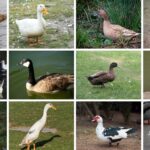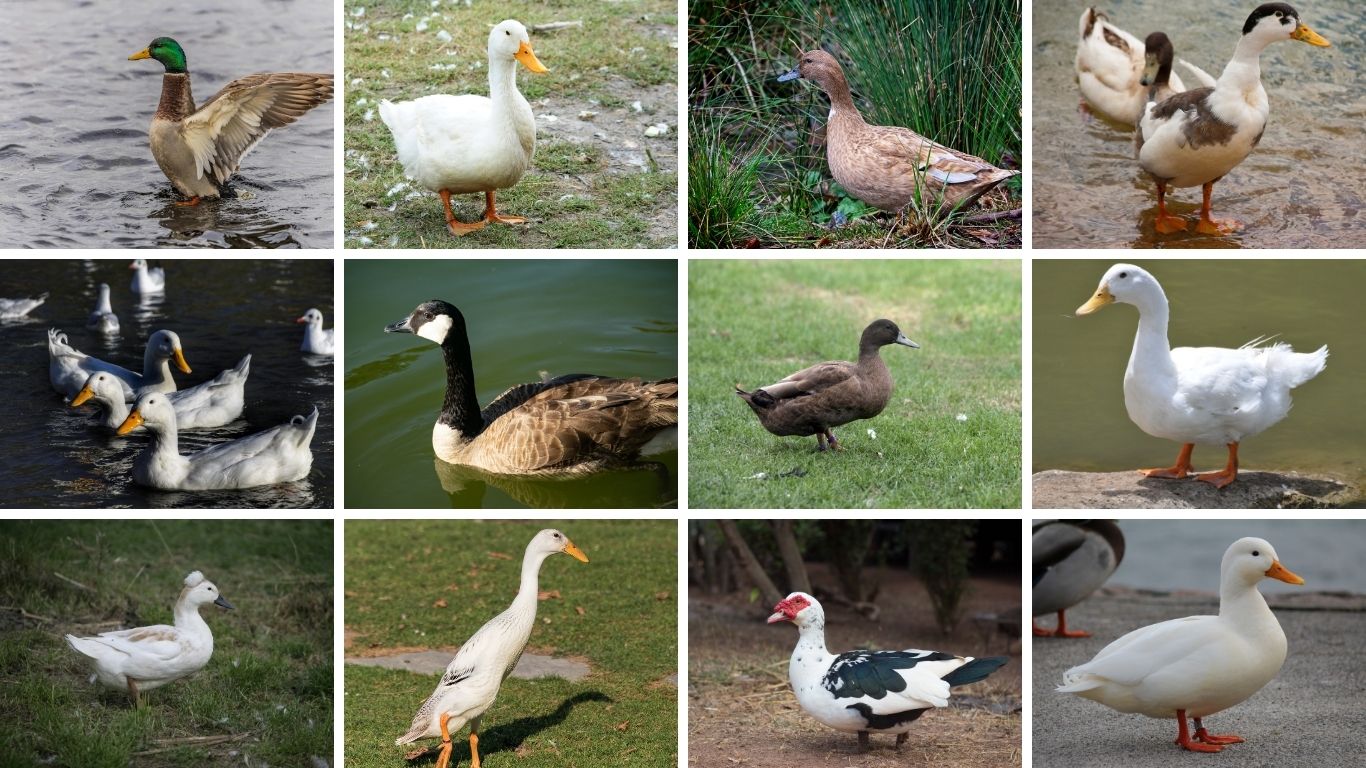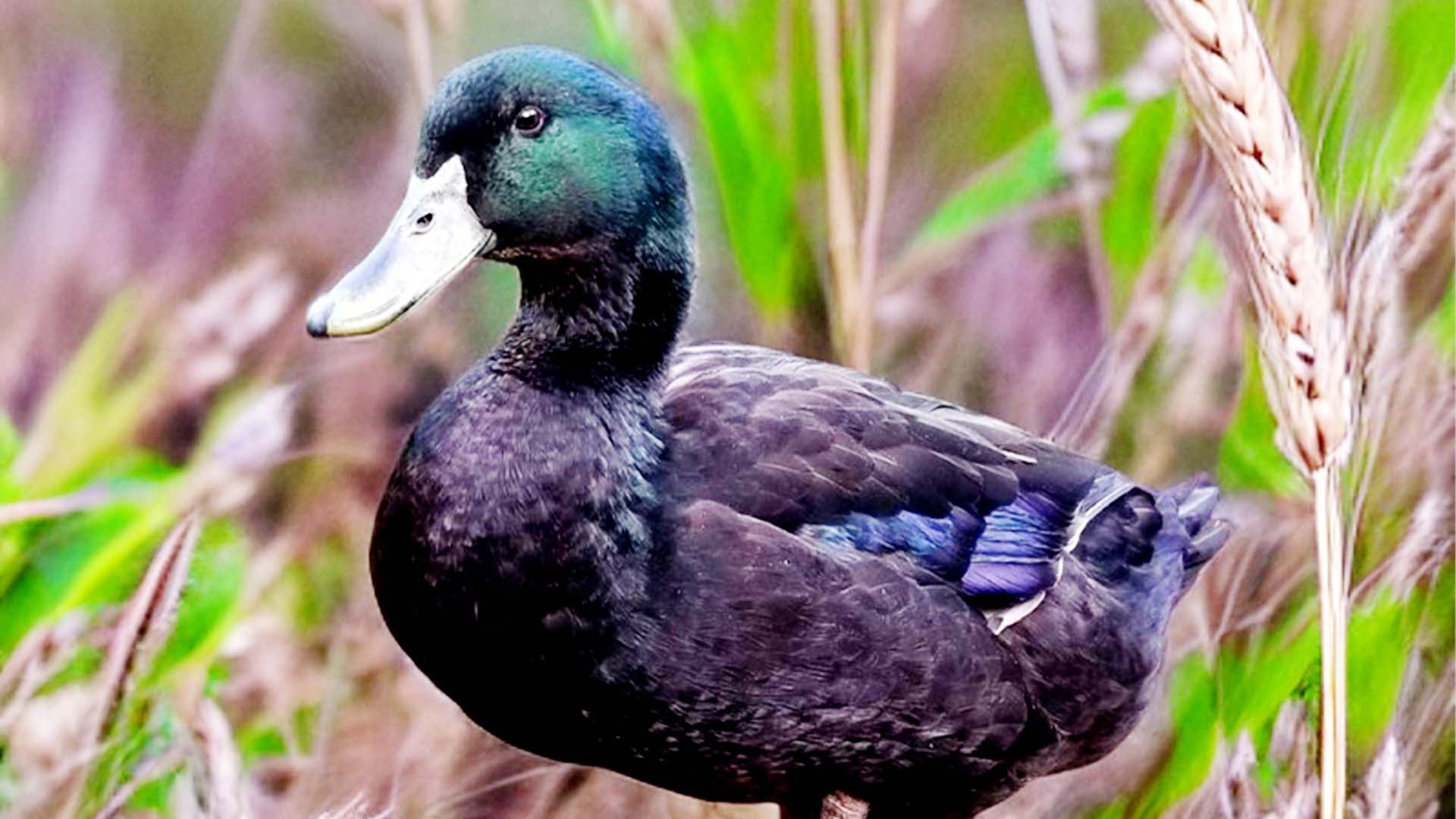Pekin ducks are among the most popular domestic duck breeds, loved for their white feathers, gentle nature, and tasty meat. But not all Pekins are the same—there are several unique types with their own traits and backgrounds. From the hefty Jumbo Pekin to the stylish Show Pekin, this guide breaks down 8 different types to help you understand their differences and pick the one that suits your needs.
1. American Pekin
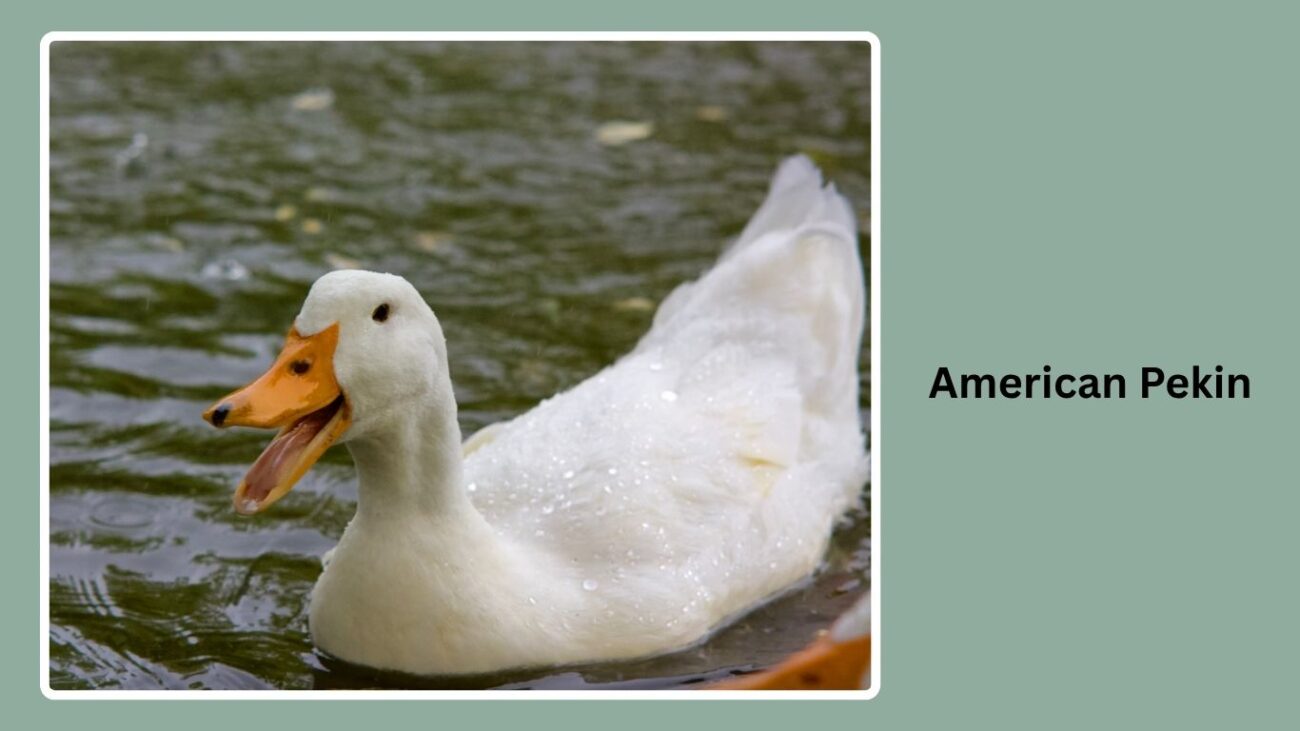
The American Pekin is the most commonly raised Pekin duck in the United States. It is prized for its rapid growth, white feathers, and tender meat. This breed was developed from Chinese ducks imported to the U.S. in the 19th century and has since become the backbone of commercial duck farming in America.
Identification
- White plumage
- Orange bill and feet
- Large, heavy body
- Horizontal posture
- Calm and docile temperament
Origin
The American Pekin originated from Chinese ducks brought to New York in the 1870s. Through selective breeding, American farmers created a duck that matured quickly and produced flavorful meat.
Purpose
It is primarily raised for meat production due to its fast growth rate and high feed efficiency. It is also sometimes kept for eggs or as a backyard pet.
Behavior
American Pekins are friendly, easy to handle, and adapt well to farm life. They are not good fliers and tend to stay close to their home area.
2. German Pekin
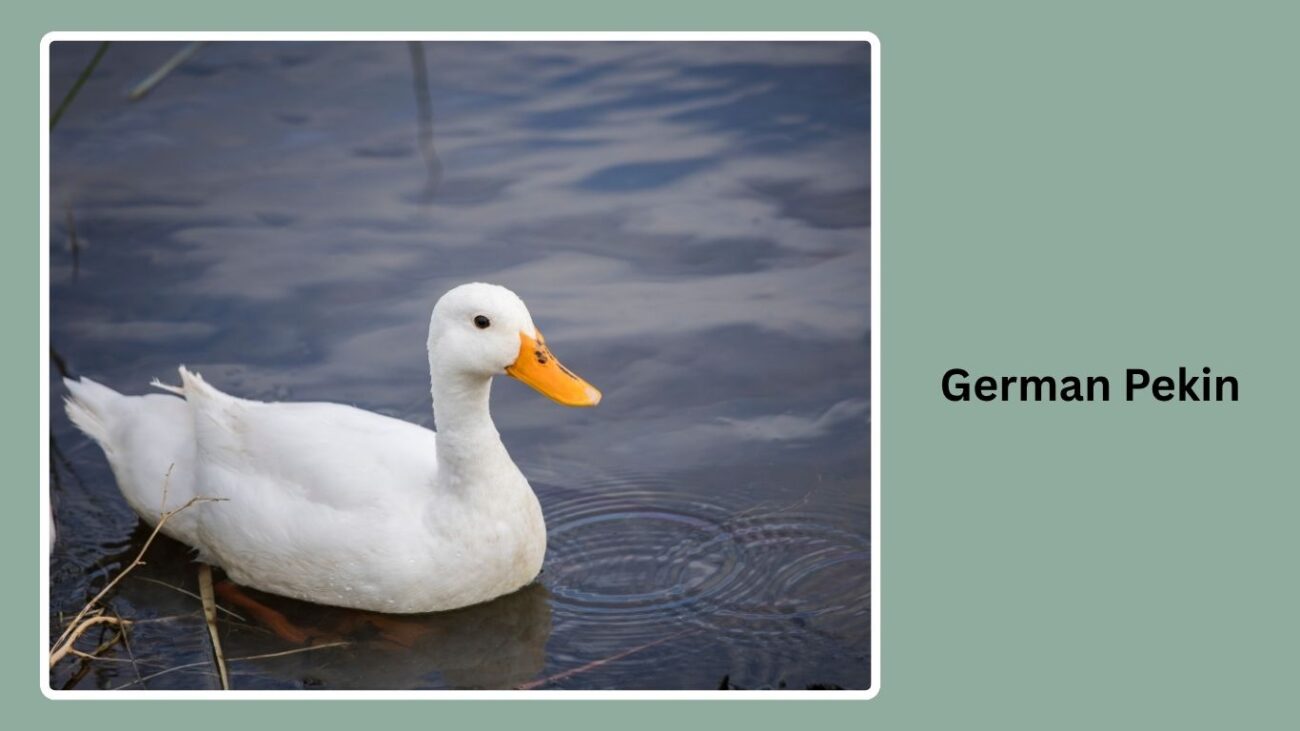
The German Pekin is a European strain of the Pekin duck that was developed separately from the American version. It is recognized for its more upright stance and active nature, resembling the body posture of the Indian Runner duck. Though less common in commercial farming, it is still valued for meat and ornamental purposes in Europe.
Identification
- White plumage
- Orange bill and legs
- More upright, vertical stance
- Slightly slimmer than American Pekin
- Active and alert behavior
Origin
The German Pekin was developed in the 1800s from Chinese ducks introduced to Germany. Breeders in Europe selected for different traits, particularly posture and carriage, which set this type apart from its American counterpart.
Purpose
While still used for meat in some European regions, the German Pekin is often seen in exhibitions or kept as a decorative breed due to its distinctive posture.
Behavior
These ducks are more active and curious compared to American Pekins. They are good foragers and tend to move around more frequently, making them well-suited to free-range environments.
3. Chinese Pekin
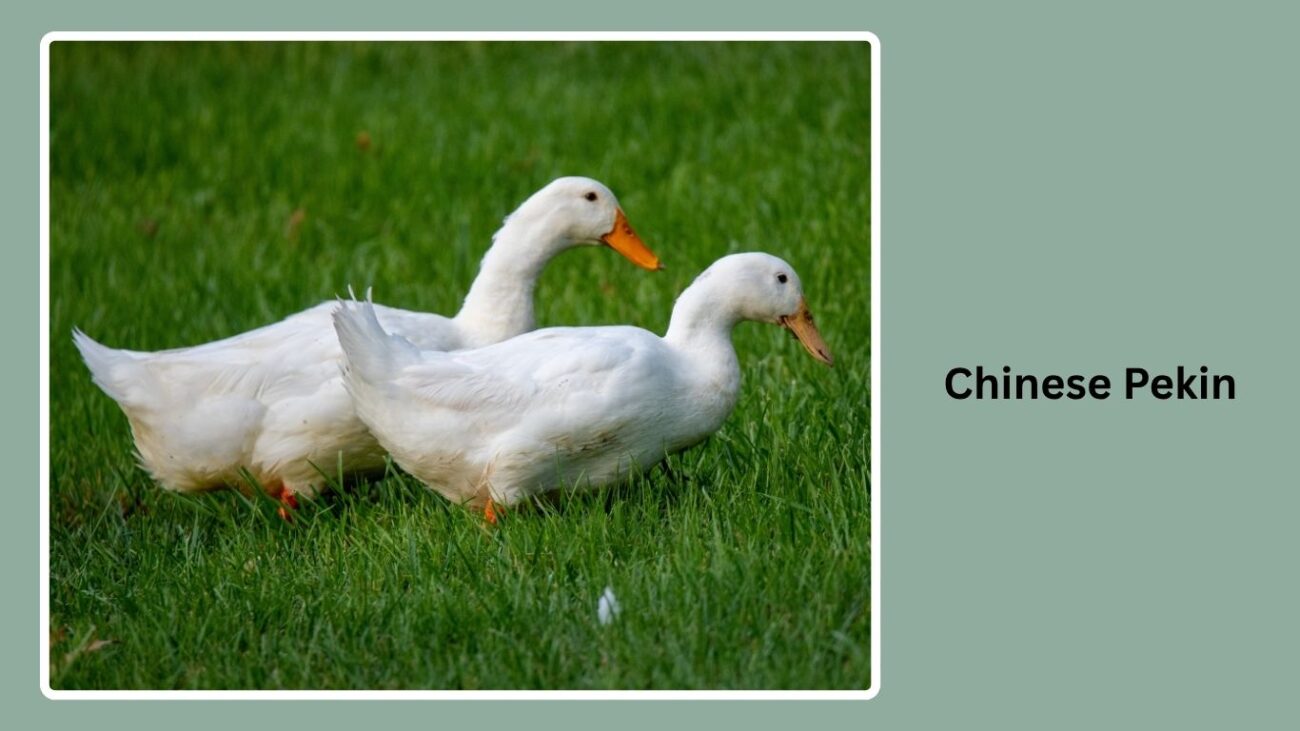
The Chinese Pekin is the original ancestor of all Pekin ducks found worldwide. It has been domesticated in China for over a thousand years and was bred primarily for meat and eggs. While not commonly found in Western farms today, it laid the genetic foundation for both the American and German strains.
Identification
- Creamy or off-white plumage
- Smaller body size than American or German strains
- Orange beak and legs
- More angular head shape
- Lighter frame and more agile
Origin
This ancient duck breed comes from China and has been a staple in Chinese cuisine and farming. It was first exported to the West in the 1800s, where it evolved into other regional variants.
Purpose
In traditional Chinese farms, the Chinese Pekin was used for both meat and egg production. It is known for its good egg-laying ability compared to other Pekin strains.
Behavior
Chinese Pekins are active and agile, often more energetic than the American type. They are well-adapted to traditional farming methods and are strong foragers.
4. British Pekin
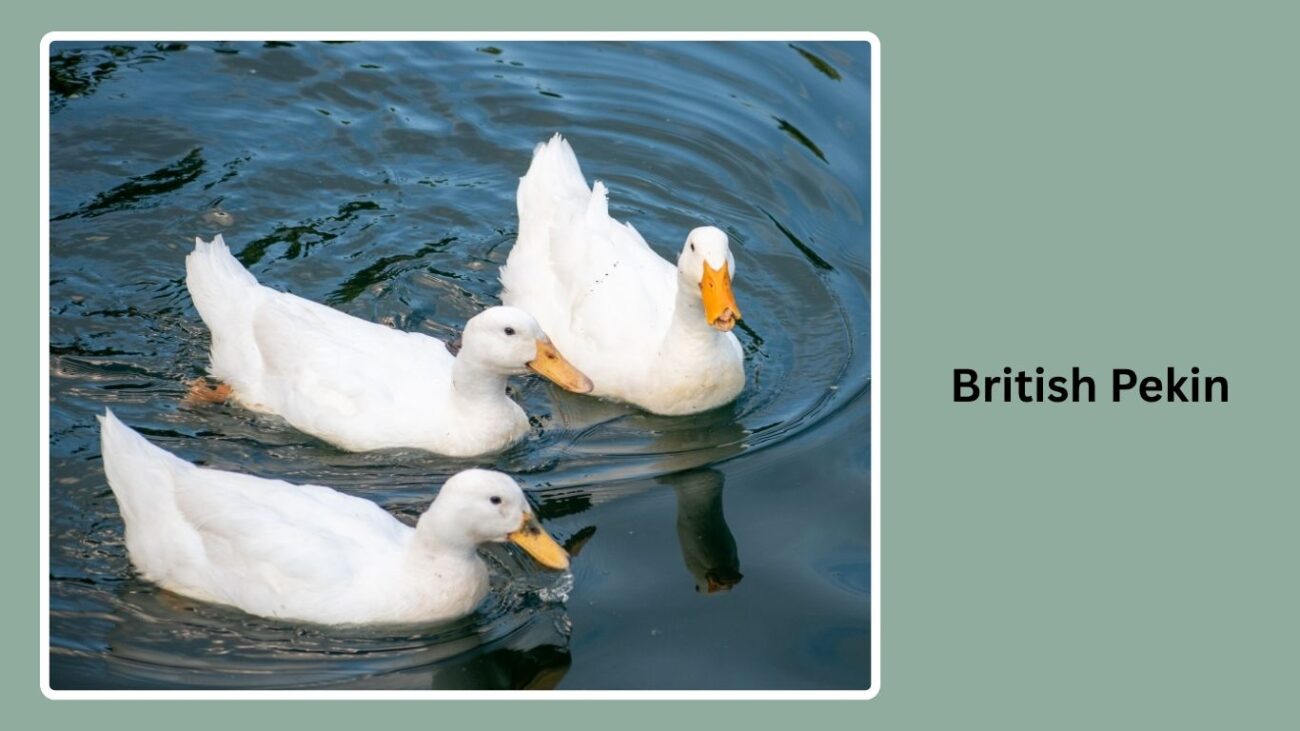
The British Pekin is a rare and refined strain developed in the United Kingdom. It is often bred for exhibition and ornamental purposes rather than commercial meat production. British Pekins are known for their elegant appearance and slightly more curved body shape.
Identification
- White plumage with slight yellow tint
- Orange beak and feet
- Rounded body with a broad chest
- Upright posture but less extreme than German Pekin
- Dense, soft feathers
Origin
This strain was developed in the UK during the 19th century, influenced by both Chinese imports and European breeding practices. British breeders emphasized form and balance for show standards.
Purpose
Primarily bred for exhibition, the British Pekin is rarely used for meat production. It’s valued for its appearance, calm nature, and suitability for shows.
Behavior
British Pekins are calm and composed, often easy to tame. Their docile temperament and graceful carriage make them favorites in poultry exhibitions.
5. French Pekin
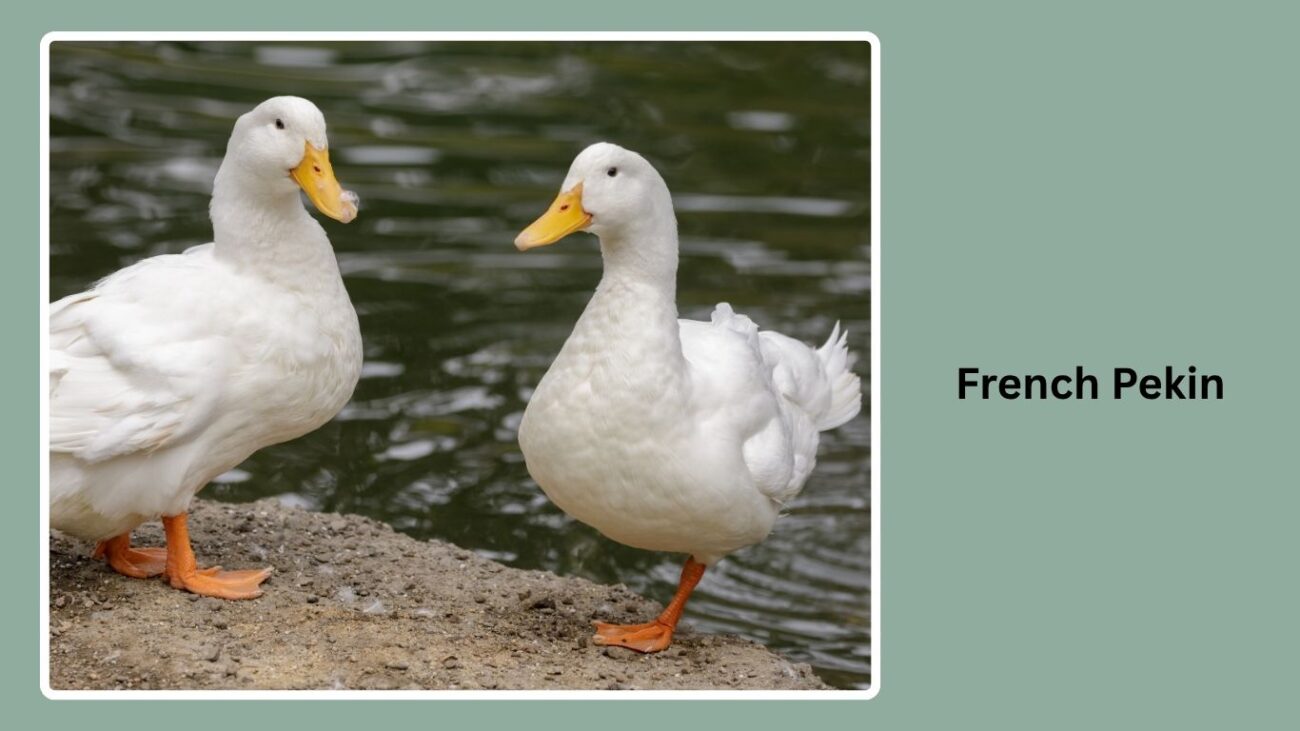
The French Pekin is a regional variation known mainly in France and neighboring countries. It is similar to the American Pekin but may differ slightly in build and productivity. Some strains have been selectively bred for better meat texture and slower growth for flavor.
Identification
- White plumage
- Orange bill and legs
- Stocky, rounded body
- Medium to large size
- Balanced, slightly forward-leaning stance
Origin
The French Pekin was developed from Chinese and possibly American imports. French breeders focused on meat quality and adaptability to local climates.
Purpose
Used for both meat production and small-scale duck farming. It’s appreciated for its meat tenderness and adaptability to different farm environments.
Behavior
French Pekins are generally hardy and well-adjusted to various conditions. They are moderately active and suitable for small farms or backyard flocks.
6. Jumbo Pekin

The Jumbo Pekin is a selectively bred version of the American Pekin, developed for extra size and weight. It’s one of the heaviest strains of Pekin duck and is widely used in large-scale commercial meat production due to its impressive feed-to-meat conversion ratio.
Identification
- White plumage
- Thick orange legs
- Large, heavy body (up to 11–13 lbs)
- Wide chest and solid frame
- Slightly more upright than standard American Pekin
Origin
This strain was developed by breeders in the United States by selecting the largest and fastest-growing individuals from standard American Pekin stock. It’s primarily found in commercial farms.
Purpose
Exclusively bred for meat. Due to their size, Jumbo Pekins are ideal for producing high meat yield in a short period of time, making them a favorite in poultry production.
Behavior
Generally calm and less active due to their size. They require careful management to prevent leg strain or health issues caused by rapid weight gain.
7. White Pekin

The term White Pekin is often used interchangeably with American Pekin, but in some breeding circles, it’s considered a slightly different or general-purpose variant. It refers to ducks with the same overall appearance but not bred as intensively for either meat or show.
Identification
- Bright white feathers
- Medium-large body size
- Orange beak and feet
- Horizontal stance
- Slightly lighter build than Jumbo Pekin
Origin
The White Pekin term is commonly used in backyard and small farm settings. It may refer to ducks from mixed lines of Pekin, not bred specifically for jumbo size or exhibitions.
Purpose
Used in backyard flocks for both meat and egg production. Suitable for small-scale farming and homesteading due to their manageable size and temperament.
Behavior
Friendly, adaptable, and social. White Pekins are easy to raise and popular among beginner duck keepers.
8. Show Pekin
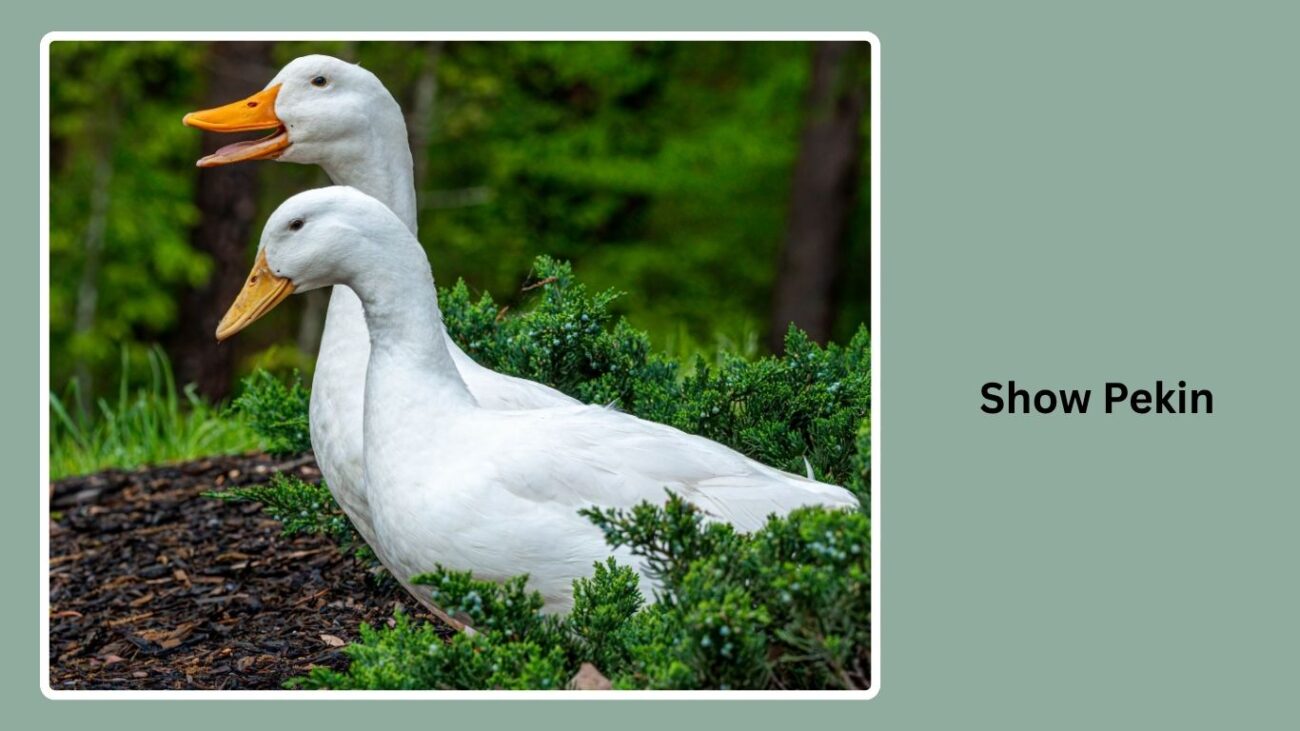
The Show Pekin is a selectively bred variant developed specifically for poultry exhibitions. Unlike commercial strains, these ducks are judged on their physical perfection—symmetry, feather quality, posture, and overall appearance. They are not primarily used for meat production.
Identification
- Pure white, dense, and silky plumage
- Rounded head with a short, wide bill
- Compact, broad body
- Clean, upright stance
- Flawless feather condition (no staining or damage)
Origin
Show Pekins were developed through generations of selective breeding, often from American or British Pekin lines, focusing on appearance rather than productivity. These ducks are bred and groomed for poultry competitions and fairs.
Purpose
Primarily for exhibition. They are bred and raised to meet exacting show standards rather than for meat or egg-laying ability.
Behavior
Gentle and calm, these ducks are used to human interaction due to frequent handling during grooming and shows. They are less active and require extra care to maintain their pristine appearance.
FAQs
What is the difference between American Pekin and German Pekin ducks?
American Pekins have a horizontal stance and are bred mainly for meat production in the U.S., while German Pekins have a more upright posture and are often used for ornamental or exhibition purposes in Europe.
Are all white ducks considered Pekin ducks?
Not necessarily. While most Pekins are white, not all white ducks are Pekins. Some other breeds like White Muscovy or White Call ducks may look similar but are genetically different.
Which type of Pekin duck grows the largest?
The Jumbo Pekin grows the largest, reaching weights up to 11–13 lbs. It is bred specifically for rapid growth and high meat yield in commercial farms.
Can Pekin ducks be kept as pets?
Yes, especially the White Pekin and Show Pekin variants. They are friendly, calm, and easy to manage, making them suitable for backyard flocks and pet owners.
Do Pekin ducks lay eggs, or are they only meat birds?
While Pekins are primarily meat birds, they can also lay eggs—usually around 150–200 eggs per year. However, egg production varies by strain, with Chinese Pekins laying more consistently than heavier strains like Jumbo Pekin.



